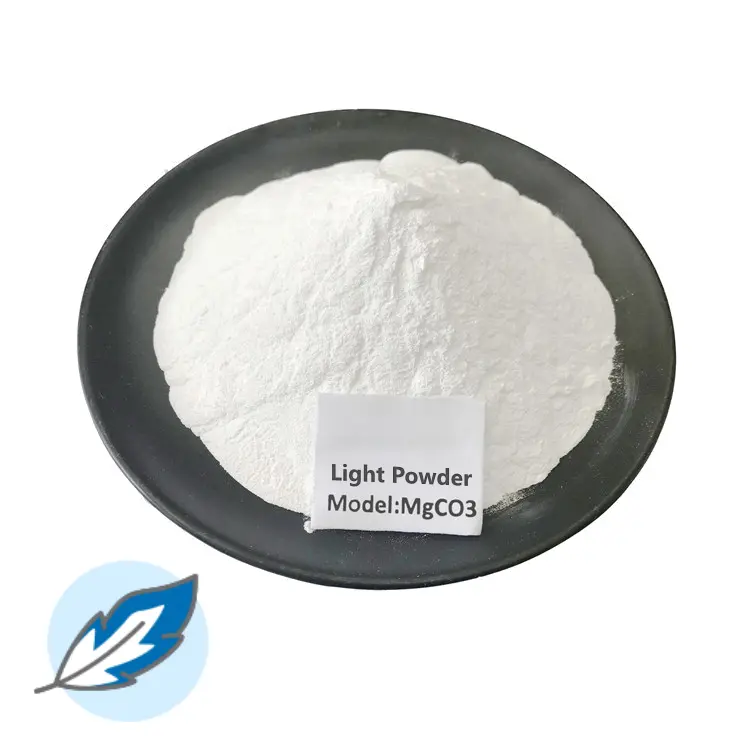Hebei Messi Biology Co., Ltd. stated that basic magnesium carbonate (4MgCO3·Mg(OH)₂·4H20) is an important inorganic mineral material. It can exist stably under natural environmental conditions and can be used as polymers such as rubber and plastics. Excellent reinforcing agent and filler for polymers, as well as gas generating agent for automobile airbags; due to its characteristics of high temperature resistance, non-burning, light texture and loose texture, it is not only a green and environmentally friendly flame retardant, but also a preparation method for other An important intermediate raw material for fine magnesium salt.
Basic magnesium carbonate is a nanosheet-like microcrystal assembly, and the raw materials and preparation methods have a great influence on its morphology. At present, basic magnesium carbonate is usually prepared by precipitation method and pyrolysis method.


Using magnesium chloride and soda ash or carbonate as raw materials, porous rosette basic magnesium carbonate microspheres were synthesized.
Using magnesium chloride hexahydrate and sodium carbonate as raw materials and ethylene glycol as the medium, spherical flaky basic magnesium carbonate nano powder was prepared by precipitation method.
Using magnesium chloride as the magnesium source, urea, ammonium bicarbonate and sodium bicarbonate as the alkali source, plate-shaped, porous flower-shaped and spherical basic magnesium carbonate were prepared by hydrothermal method, and sorbitol was used as the organic template. 4MgCO3·Mg(OH)₂·4H₂O basic magnesium carbonate whiskers with an aspect ratio greater than 100 were prepared by homogeneous precipitation method.
With the assistance of sodium dodecyl benzene sulfonate, basic magnesium carbonate microspheres with a particle size of 25 μm were directly synthesized from magnesium chloride hexahydrate and anhydrous sodium carbonate as raw materials.
Using magnesium sulfate and potassium carbonate as raw materials, petal-shaped spherical basic magnesium carbonate was prepared by a one-step method, and it was found that the modification has excellent flame retardant properties for high-density polyethylene (HDPE).
It can be seen that most researchers use chemical reagents such as soluble magnesium salts and carbonates as raw materials, and use a direct precipitation method of dropping one raw material into another raw material to synthesize basic magnesium carbonate crystals with different morphologies; however, this method exists The speed is slow, salty wastewater is produced, the morphology is relatively simple, and the preparation cost is high.
Basic magnesium carbonate with MgO content of 42.25% and CaO content of 0.03% was prepared using light-burned dolomite powder as raw material and secondary carbonization method. Using salt lake paragenetic minerals as raw materials, basic magnesium carbonate powder with an average particle size of 396 nm was synthesized by uniform precipitation method.
my country’s magnesite resources are abundant and of high quality. Among them, Liaoning’s identified resource reserves are 3.516 billion tons, accounting for approximately 86.39% of the country’s total magnesite reserves. It is one of the dominant special mineral resources in Liaoning Province. In the past, high-quality mineral resources were sharply reduced due to mining for the rich and abandoning the poor, and indiscriminate mining. A large amount of low-grade magnesite was abandoned and stacked in an area, resulting in a huge waste of resources. Mineral resources are my country’s non-renewable advantageous resources. How to realize their efficient utilization is an important research topic. Research reports on using magnesite as raw material mainly focus on the preparation of ordinary light magnesium carbonate, while there are fewer reports on the preparation of 414 type basic magnesium carbonate crystals.
Hebei Messi Biology Co., Ltd. stated that in order to improve the efficient and high-value utilization of magnesium ore resources, based on previous research, natural magnesite was used as raw material to self-produce rod-shaped magnesium carbonate trihydrate whiskers with smooth surfaces, and used them as Template, basic magnesium carbonate crystals with different morphologies were prepared at low cost. The effect of mechanical stirring on the crystallization process and crystal morphology was mainly investigated, and the crystal structure of basic magnesium carbonate was analyzed. This research has the advantages of cheap and easily available raw materials, high product purity, mild preparation conditions, low cost, simple and operable process, and easy industrialization. It has positive significance in promoting efficient and high-value utilization of magnesite resources.
